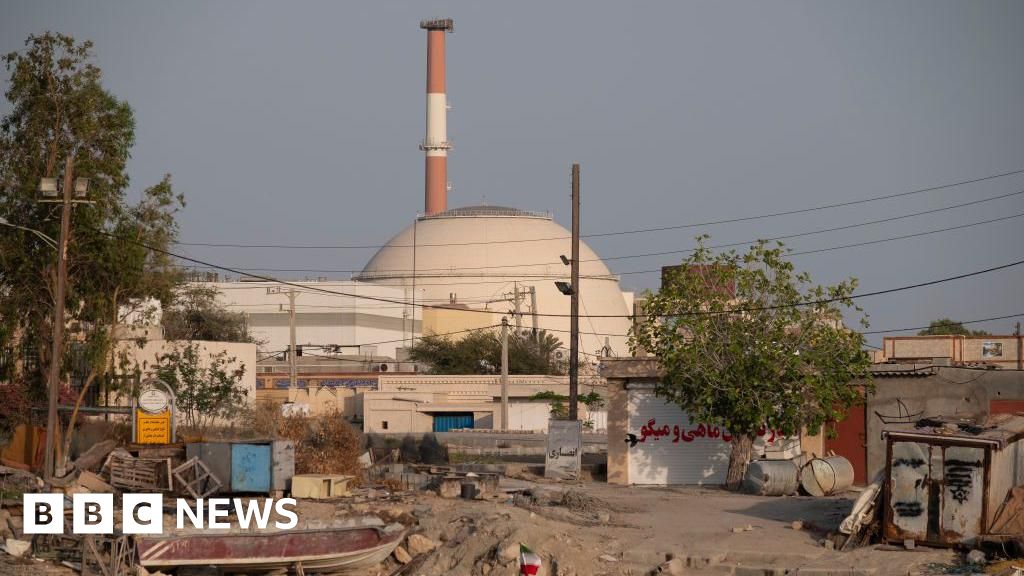Israeli strikes on Iran nuclear sites ‘risk radioactive releases’. Nuclear chiefs warn that Israeli strikes on Iranian nuclear sites mark a dangerous violation of international protocol. Israeli attacks on Iranian nuclear sites are a ‘deeply concerning’ development, the IAEA says. IAEA Director General Rafael Grossi said his agency was in contact with Iranian authorities to assess the impact of Israeli strikes on “nuclear security and safety.” Grossi reported that there were no “elevated radiation levels” at the Natanz complex after it came under fire. Another key nuclear site, Fordow, was reportedly also targeted. “This development is deeply concerning,” said Grossi. “I have repeatedly stated that nuclear facilities must never be attacked, regardless of the context or circumstances, as it could harm both people and the environment.” He further noted “armed attacks on nuclear facilities could result in radioactive releases with grave consequences within and beyond the boundaries of the State which has been attacked” and called for “maximum restraint to avoid further escalation.” US intelligence currently assesses that Iran has not moved to weaponise its nuclear programme, although it has enriched uranium beyond the level required for civilian use.
iNews 14th June 2025 read more »
Israel claims it damaged Iran’s Natanz nuclear facility “significantly.” But questions remain. Early Friday, Israel conducted air strikes on the Natanz nuclear facility, Iran’s main enrichment site. The strikes were part of a larger operation by the Israeli military that targeted nuclear sites, long-range missile facilities, military leaders, and nuclear scientists across Iran. It was not clear how much damage the Natanz nuclear site—which hosts both a commercial fuel enrichment plant for use in things such as powering civilian nuclear reactors, and the more technologically advanced and opaque so-called pilot fuel enrichment plant (PFEP)—had sustained from the strike. Israel’s military published its own assessment of the attack, claiming that they have damaged the underground area of the site. This area reportedly contains a multi-story enrichment hall with centrifuges, electrical rooms, and additional supporting infrastructure, which can be used to enrich uranium to military-grade levels. During a briefing, Israel Defense Forces (IDF) spokesperson Efi Defrin said the Natanz nuclear site was “significantly damaged.” “It’s difficult to assess the consequences of the strikes on the nuclear program itself and the facilities, as we are still waiting for independent analyses of the satellite imagery,” Héloïse Fayet, a research fellow at the French Institute of International Relations and an expert of nuclear proliferation in the Middle East, told the Bulletin.
Bulletin of Atomic Scientists 13th June 2025 read more »
Iran has enough enriched uranium to make 15 nuclear bombs, and there is intelligence to show it was planning to weaponise it, Israel said. On Saturday, a senior Israeli Defence Forces official said Israel faced an “immediate existential threat” from Iran and that operations against Iran would continue until that threat was removed. The claims, which have not been independently verified, surpass previous estimates. On Thursday, the UN’s nuclear watchdog estimated that Iran had enriched enough uranium for nine bombs.
Telegraph 14th June 2025 read more »
The Israeli military said it had accumulated intelligence showing that “concrete progress” had been made “in the Iranian regime’s efforts to produce weapons components adapted for a nuclear bomb”, including a uranium metal core and a neutron source initiator for triggering the nuclear explosion. Kelsey Davenport, director for non-proliferation policy at the US-based Arms Control Association, said Israel’s prime minister “did not present any clear or compelling evidence that Iran was on the brink of weaponizing”. “Iran has been at a near-zero breakout for months,” she told the BBC, referring to the time it would take Iran to acquire enough fissile material for one bomb if it chose to do so. “Similarly, the assessment that Iran could develop a crude nuclear weapon within a few months is not new.” She said some of Iran’s nuclear activities would be applicable to developing a bomb, but US intelligence agencies had assessed that Iran was not engaged in key weaponization work.
BBC 14th June 2025 read more »
On 12 June, the IAEA Board of Governors adopted a resolution declaring that the Iranian regime is in breach of its nuclear obligations. Submitted by the UK, France, and Germany, and approved by a solid majority, the resolution expresses “deep concern” over Iran’s failure to explain uranium traces found at undeclared sites and urges full and immediate cooperation with IAEA inspectors, writes Firouz Mahvi. Despite repeated warnings, Tehran continues to obstruct inspections, withhold crucial information, and restrict monitoring. According to the IAEA’s latest report, Iran now holds more than 140 kg of uranium enriched to 60% purity—dangerously close to weapons-grade—and over 5,000 kg enriched at lower levels. These levels far exceed the JCPOA limits and represent a direct threat to global non-proliferation efforts.
EU Reporter 13th June 2025 read more »










